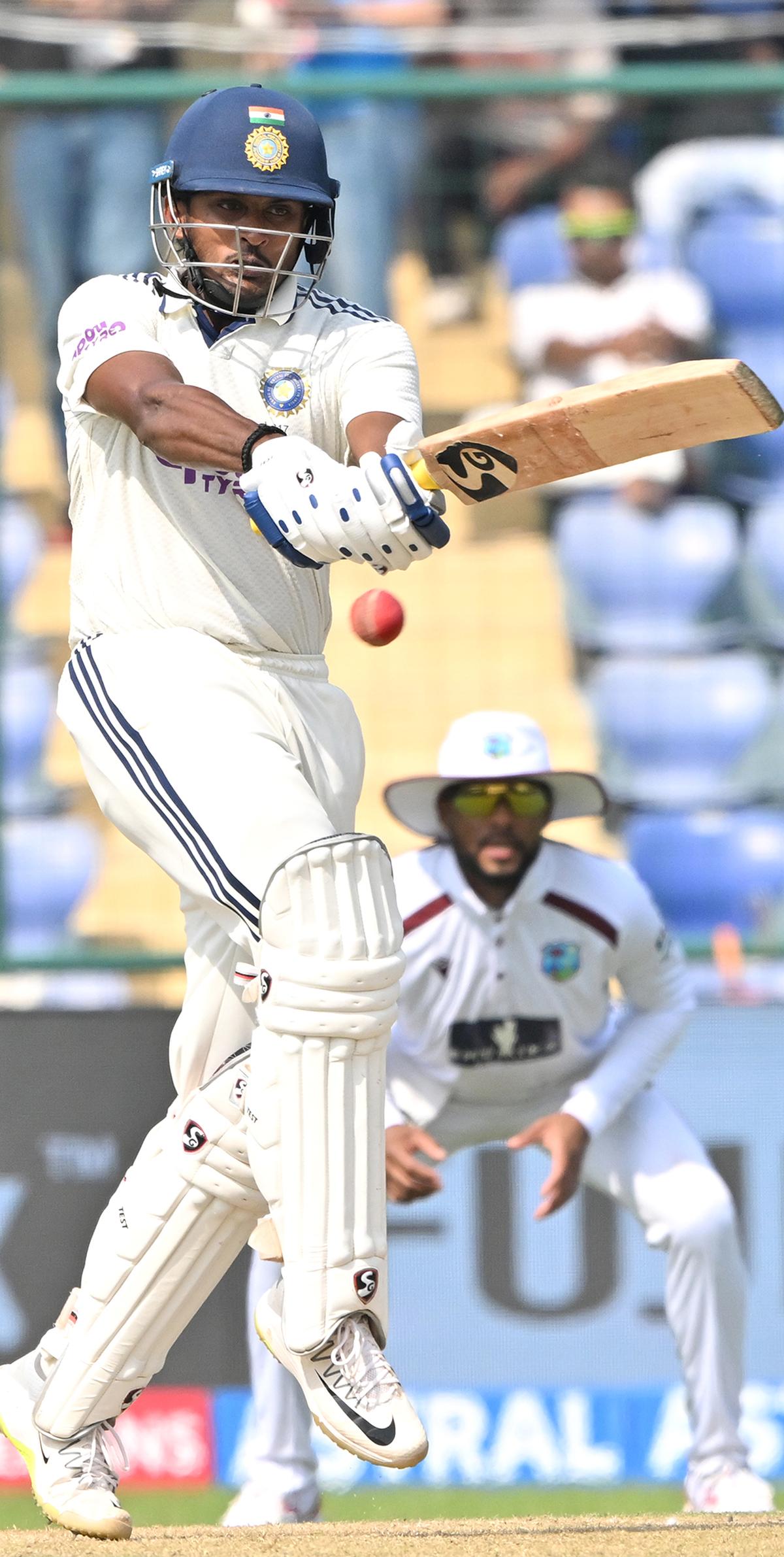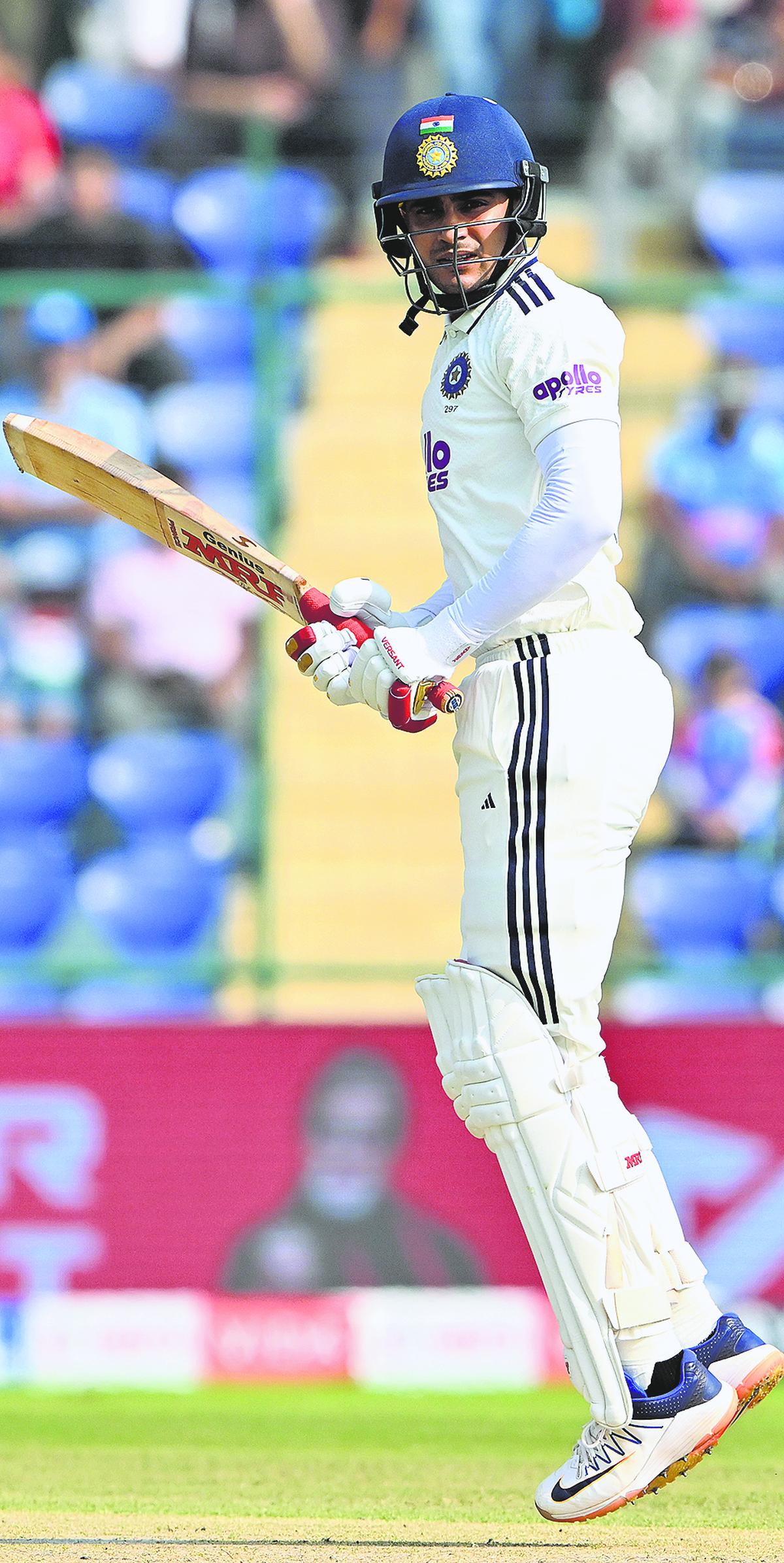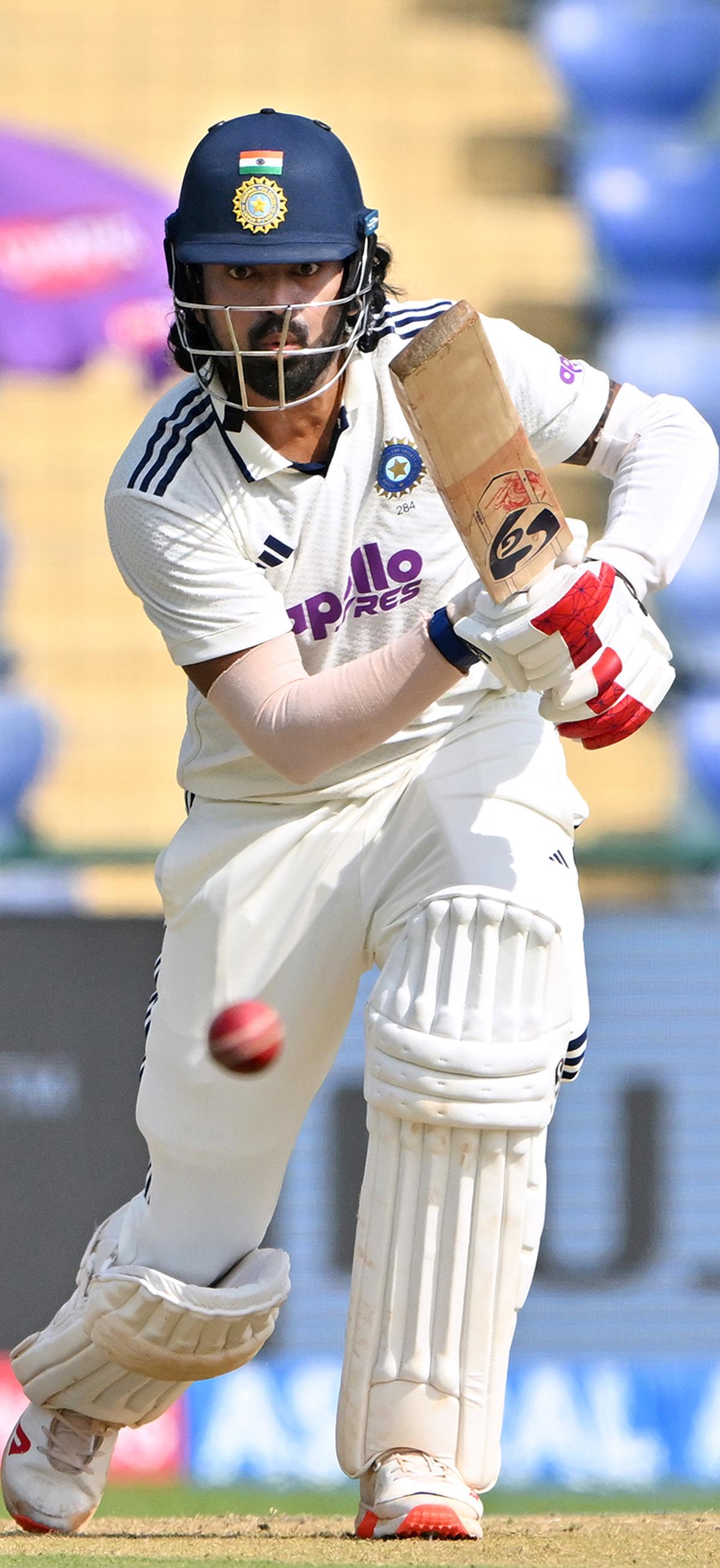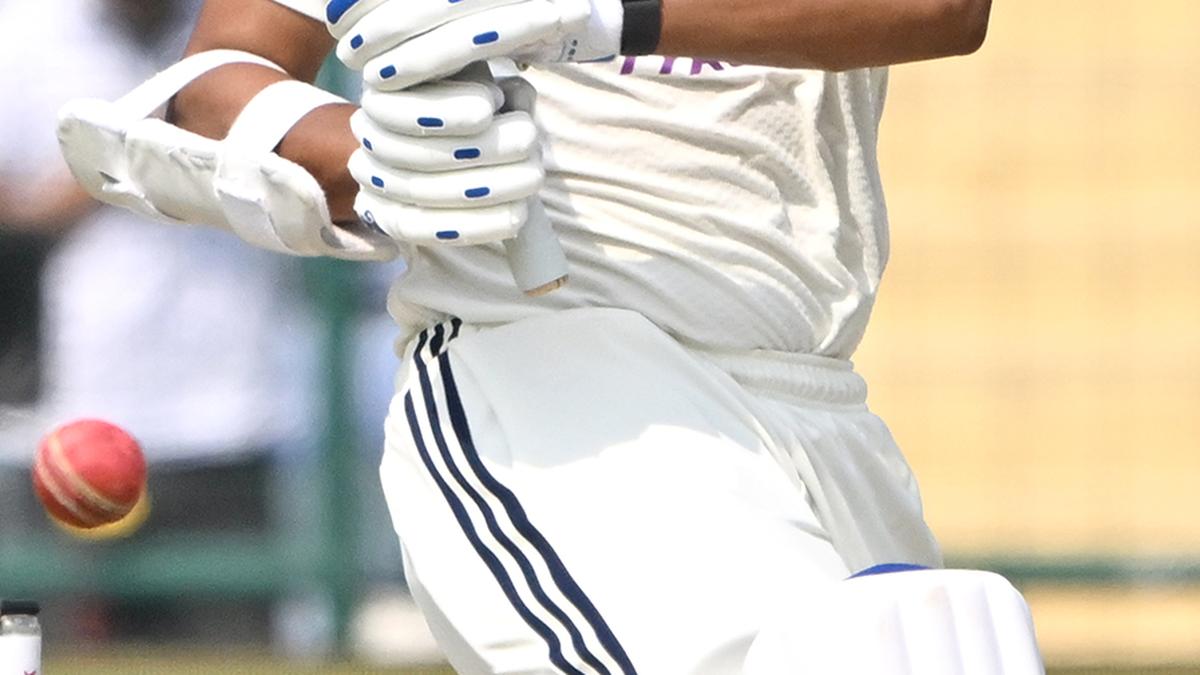
Sai Sudharsan
| Photo Credit:
R.V. MOORTHY
When an era ends, it brings with it the hope of an exciting future, but also a certain trepidation. How will the new order shape up? How long will the period of transition last? Will the tomorrow match up to the yesterday?
These questions were uppermost on Indian minds ahead of the tour of England in June, India’s first foray into Test cricket since the retirements of Virat Kohli and Rohit Sharma from the five-day game. Despite his diminished returns in his last five years in red-ball action, Kohli will go down as one of the great batters of his generation. Rohit might not fall in the same league as his predecessor as captain, but finding a second wind as opener from October 2019, he had a brilliant run until a string of failures since September last year potentially hastened the end.
In Kohli and Rohit’s departure, India lost not just two pedigreed performers who had played, and delivered, in all parts of the world, but also a chunk of irreplaceable experience. International cricket isn’t about skills alone. It’s got much to do with temperament, with the ability to hold composure under pressure, to be able to execute one’s plans with felicity, and that comes only from doing it over and over again.
The big challenge
A Test tour of England, a five-Test tour at that, loomed as a huge challenge for India’s revised top four. Five-Test series are a double-edged sword; they offer the chance to bounce back from early failures and finish strongly, but they can also brutally and unforgivingly expose technical inadequacies which are impossible to fix during the course of a series, as Kohli himself found out in England in 2014 when he managed a meagre 134 runs from 10 innings.
One might argue that England doesn’t pose the same stern examination to overseas batters that it once did. Some of it has got to do with pitches, which have gone from seam-friendly to placid shirtfronts which are a must to espouse the ‘Bazball’ brand of batsmanship that needs bald surfaces to facilitate that endeavour. Some of it also has to do with the Dukes ball going, for some strange reason, from a pacers’ ally to the batters’ best friend. This summer was particularly hot, which meant the overhead conditions too were stacked against the bowlers. And, truth to tell, the England bowling attack wasn’t the fiercest or the most threatening – the lion-hearted Ben Stokes excepted – which meant there were runs to be had. This was a great summer to be a batter, but runs still had to be eked out, especially for a line-up in which two of the first four had never played a Test in that country.
India had a new captain, who had featured in three Tests earlier in England with little joy, but who was also batting out of position, at No. 4 for the first time in his career. To make matters worse, Shubman Gill had a highest of 36 in his preceding 18 innings outside Asia. The first-time skipper had his work cut out. Opener Yashasvi Jaiswal had no taste of Test cricket in England, nor had Sai Sudharsan, on his first Test tour, and Karun Nair, primed to play his first Test in eight years. Of the premier batters, only K.L. Rahul, Gill, Rishabh Pant and Ravindra Jadeja knew what Test cricket in England looked like. India’s fans feared the worst.

Shubman Gill
| Photo Credit:
R.V. MOORTHY
They needn’t have worried, as it turned out. India topped 350 eight times in 10 innings. They ended the tour with 12 centuries, five of which came in the first game alone. Gill smashed numerous records while amassing a staggering 754 runs, which included four tons with a monumental 269 in Birmingham at his highest. There were two hundreds apiece for Jaiswal, Rahul and Pant, and further three-figure knocks from Jadeja and Washington Sundar, at No. 5 in the second innings in Manchester. Never mind the flat tracks, never mind the largely toothless England attack, these were stunningly outstanding returns. Perhaps the greatest tribute to the new-look, new batting unit was that at no stage of the seven-week tour were Kohli and Rohit truly missed.
The big question

K.L. Rahul
| Photo Credit:
R.V. MOORTHY
Teams aspiring for champion status are always keen to improve, never content to rest on their laurels. India had found delightfully satisfying answers to several questions, but there was still a big question mark over the No. 3 position, occupied with distinction for more than two and a half decades almost exclusively by Rahul Dravid and Cheteshwar Pujara in that order. The one-drop slot is pivotal because it’s from there that the innings is shaped and controlled. The best batter in the line-up usually comes in at No. 4, he is generally an attacking force, but the No. 3 is required to show greater flexibility and adaptability. He might be, and sometimes is, needed to face the second ball of the innings; at other times, he might watch the openers put up a substantial partnership, yet be ready mentally when he takes guard. It’s a position that tests mettle massively.
In England, India tried out Sai Sudharsan, Karun and Sai Sudharsan again in that influential slot, but with only limited returns. A solitary half-century (61) in four innings for the left-handed Sai Sudharsan, who played in the first and the last Tests, a highest of 40 in four innings for Karun, who started and ended the series at No. 6. Sai Sudharsan looked a little nervy and on edge, and showcased a potential weakness to full balls pitched on his legs; Karun was a lot more assured on his comeback but failed to capitalise on both platforms and starts. India had to pick between the two with the future in mind as the home international season loomed and the decision-makers understandably went with the 23-year-old, left-handed Sai Sudharsan ahead of the right-handed Karun, ten years his senior.
Coming into the West Indies series, Sai Sudharsan wasn’t quite on trial, but he knew more than anyone else that he needed a score for his own sake, to convince himself that Test cricket wasn’t an uncrackable puzzle. Between the Oval (August) and Ahmedabad last week, he uncorked 73, 75 and 100 for India-A against Australia-A in two four-day outings in Lucknow in September, so he carried form and feel-good to the first Test. But he was out leg before to Roston Chase attempting an ugly pull when only seven while Rahul, Dhruv Jurel, the wicketkeeper batting at No. 5, and Jadeja helped themselves to hundreds.
Sai Sudharsan, the coaching staff tell us, is one of the calmest, most relaxed individuals in the dressing room who is blessed with great equanimity. He is also a strong believer in routines and processes and methodology, and one of his self-help tools is visualisation.
Two days before the second Test at the Arun Jaitley Stadium in the national capital, Sai Sudharsan had a torrid time at practice, his timing awry, his feet not obeying his mind’s commands. Miscues flew off his bat, forcing Gill, standing behind his opening partner at Gujarat Titans, to once shout out ‘Oye Sai’. Sai Sudharsan, however, didn’t go into his shell because even at this tender age, he has the maturity to separate nets from game play.
It was no surprise to see him produce a beautifully crafted 87 on the first day, an innings notable for the high onus on backfoot play which perhaps, ironically, cost him a maiden Test ton.
There were wristy whips through the on-side with the great elegance that seems to come naturally to left-handers, especially the tall ones, but also strokes with punch and weight in front of the stumps in the ‘V’, strokes that suggested that he was on top of his game. His innings might have come against a not-too-dangerous attack on an admittedly placid deck, but it had class and quality stamped all over it.
India will hope this isn’t a one-off, that Sai Sudharsan will kick on and settle the No. 3 debate, if one even exists, once and for all. He has the full backing of the leadership unit and this splendid 87 will have bought him more time to bed down to the demands of Test cricket. But Sai Sudharsan won’t be unaware that he hasn’t yet nailed down his status as the one-drop batter. Devdutt Padikkal is snapping at his heels while at some stage, India might have to consider Jurel as a specialist batter once Pant returns from injury and takes his place behind the sticks, most likely during the series at home against South Africa next month. Sai Sudharsan won’t be on borrowed time, but he will feel the necessity to showcase consistency, not just isolated streaks of brilliance.
Formidable line-up
India has formidable batting line-up now; there have been 17 centuries in the last seven Tests, the top four is in safe hands for the time being. Rahul is relishing his role as senior statesman and mentor to the younger group, Jaiswal’s penchant for daddy hundreds is gradually headed towards the ‘legendary’ league, Gill is in pristine touch and Sai Sudharsan will hopefully kick on from here. Pant (or Jurel in his absence), followed by Jadeja, Washington and Nitish Kumar in any order is quite an intimidating unit that, on paper, is equipped to score runs everywhere in the world. The disappointing thing from their perspective is that after the two Tests against the Proteas next month, India’s next assignment in the World Test Championship isn’t until August, when they tour Sri Lanka.
It won’t be until they travel to New Zealand towards the end of next year for two further Tests that their adaptability to unfamiliar, tricky conditions will be examined minutely. But you can only play the hand you’re dealt.
The first point of order will be to extend their heavy run-scoring ways (448 for five declared in Ahmedabad, 518 for five declared in New Delhi) to the South African showdown beginning in Kolkata on November 14, and then take things from there.

